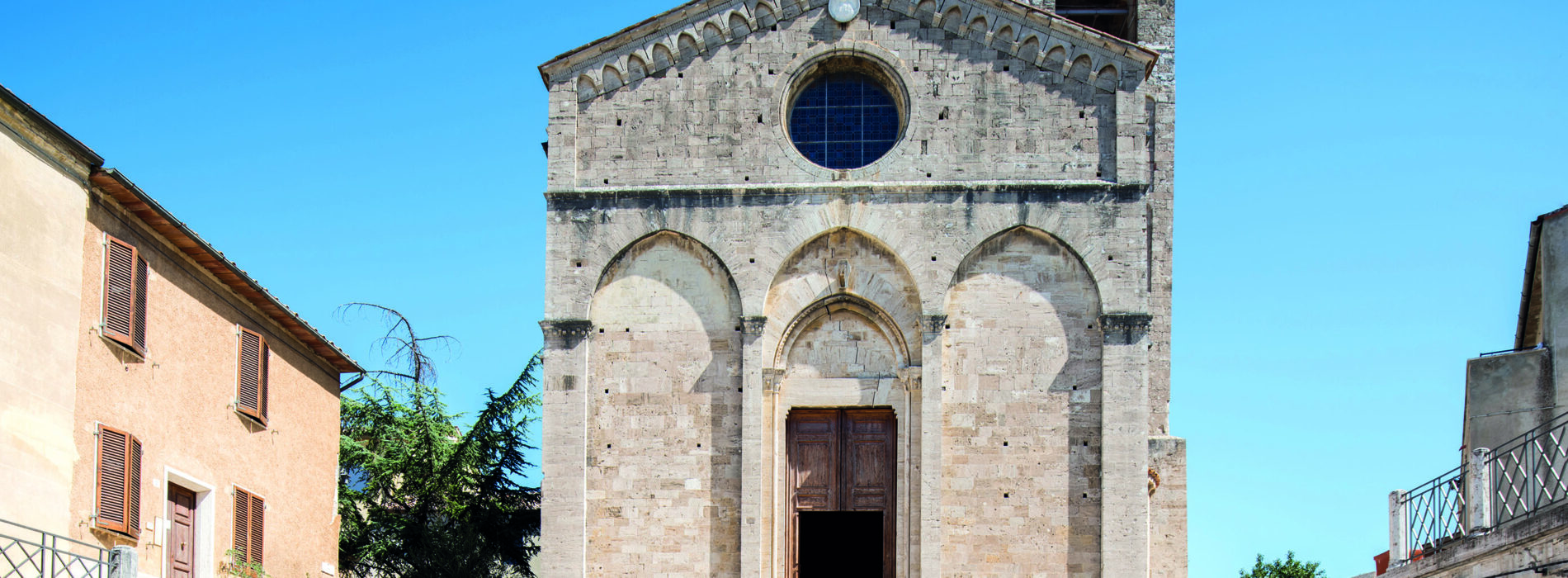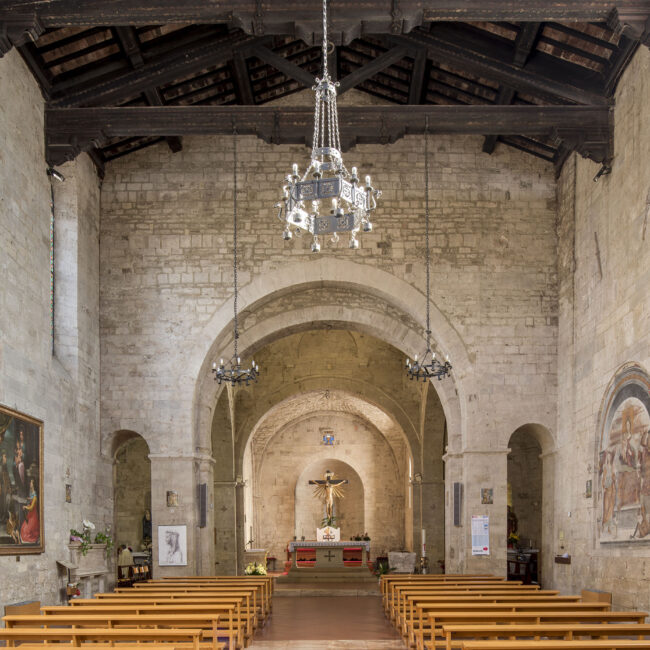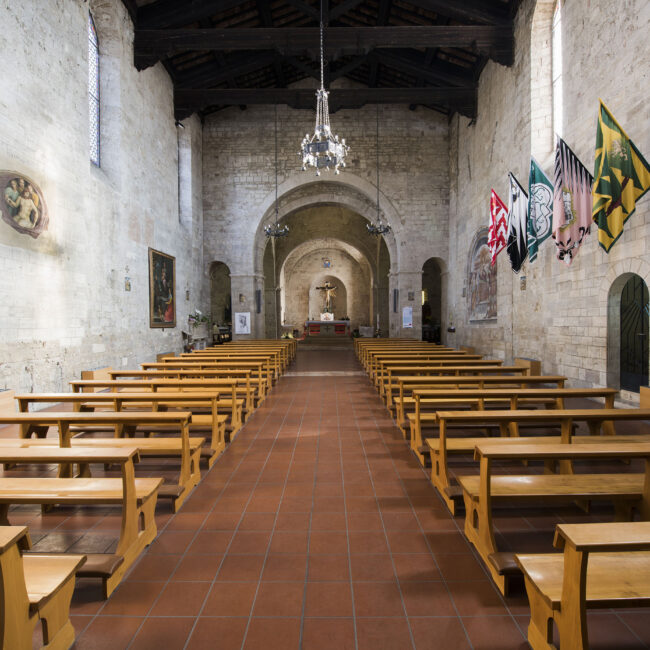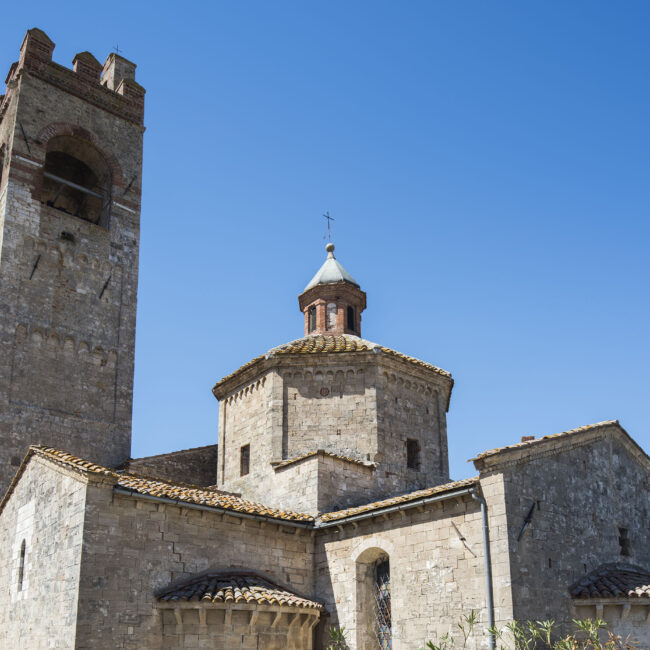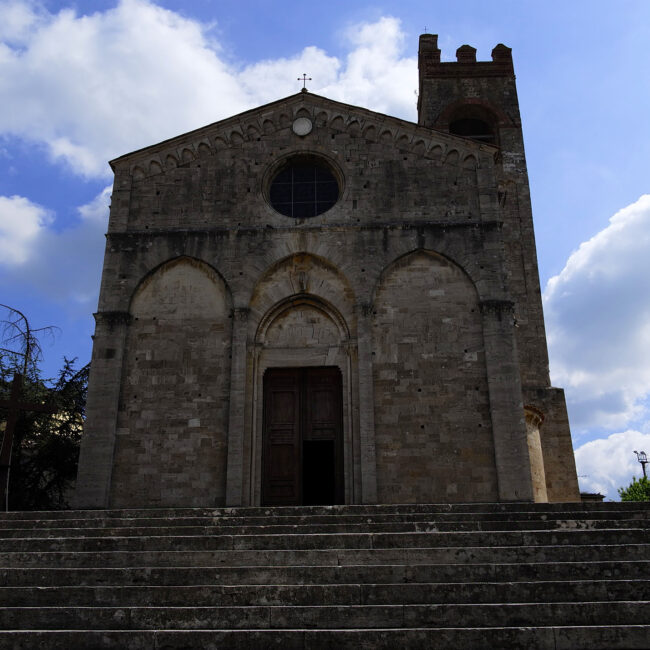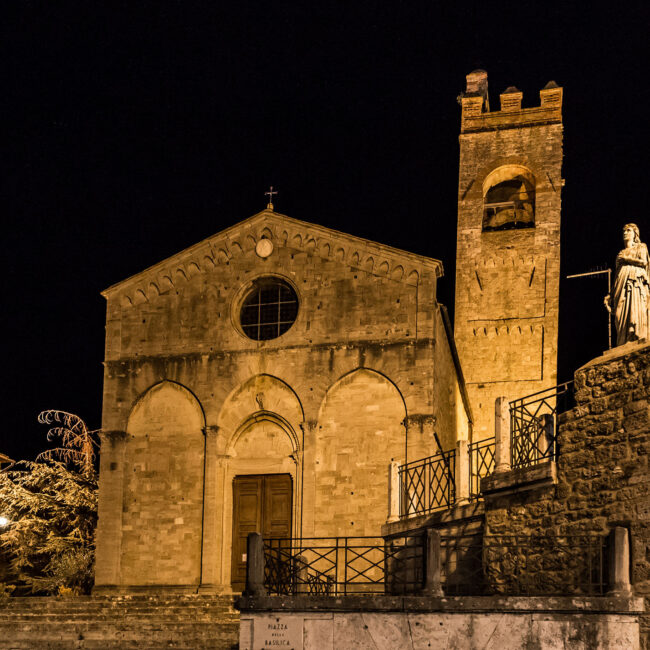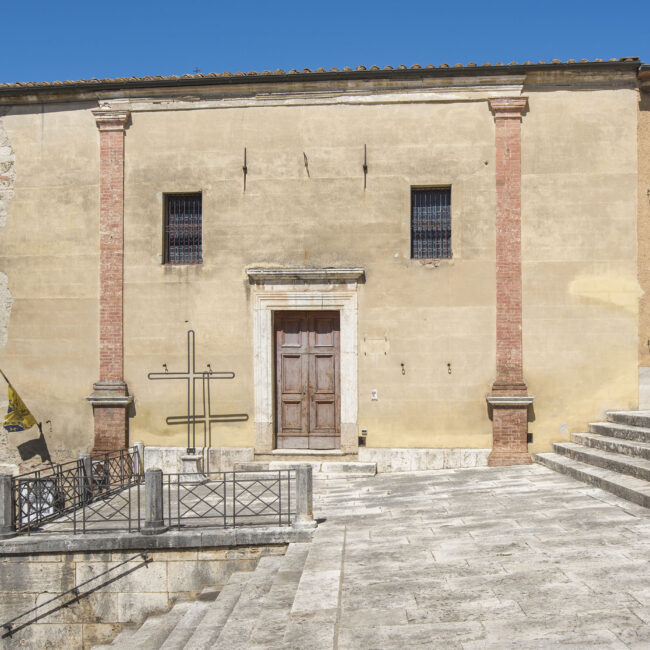Basilica of Saint Agatha
With its Romanesque-Gothic architecture, this pristine church is the main place of worship for the community.
Important works of art come from here, now exhibited in the Museum of Palazzo Corboli.
History
The church is first mentioned in documents from 1029 and 1040, after inheriting the baptismal rights of the older parish of Sant'Ippolito. Upon entering, you will feel the aura of the past envelop you, especially when standing before the ancient baptismal font!
Between the 13th and 14th centuries, the church was expanded with the construction of a large nave in Gothic style. The church became a Collegiate in 1542 and was named a Basilica in 1991.
Architecture
The building, situated between Romanesque and Gothic styles, embodies the elegance of a transitional phase, combining solidity with a vertical lift. Its main features, inspired by monastic tradition, are evident in its Latin cross layout and the majestic hemispherical dome, which, externally covered by an octagonal lantern, rises solemnly at the intersection of the transept and nave.
Sublime is the space perceived beneath the great dome, where the 15th-century wooden crucifix, believed to be miraculous, vigilantly stands. This crucifix gave rise to the celebrations of Settembre Ascianese, still fervently celebrated by the entire community.
The façade is a true masterpiece, marked by three blind pointed arches adorned with toothed stones and capitals carved with leafy motifs, which speak to the care and attention to detail from a distant era. Above the roof eaves, a frame of pointed arcades creates a delicate embroidery of shadows, framing the central rose window that captures the light of day.
Art
Inside, some fragments of 14th-century frescoes reveal the ancient richness of the wall decoration. The angelic figures and saints glimpsed in depictions of the Assumption evoke a luminous past, which was later updated with new paintings in the 16th century. Among these, a fragment depicting the Deposition of Christ, attributed to Bartolomeo Neroni, known as il Riccio, stands out with its dramatic intensity, offering a glimpse into the mastery and artistic sensitivity of the time.
Along the nave walls, precious polychrome tiles depicting the Stations of the Cross, dated 1790, are displayed. These works are attributed to Francesco Francini, one of the greatest potters of the period. Each tile vividly and intricately narrates the Passion of Christ, transforming the journey through the church into an experience of deep reflection and artistic wonder. Francini’s work, with his skill in shaping terracotta and bringing it to life through the artful use of color, makes these pieces a true masterpiece of Asciano’s ceramic art.
Among the extraordinary historical and artistic works from this church, now housed in the Museo di Palazzo Corboli, are:
- Madonna and Child by Segna di Bonaventura, a masterpiece of the early 14th century, originally the central part of a polyptych, capturing the gaze with the intense expression of the Virgin. Her poignant awareness of the fate awaiting her son emanates a palpable emotion, reflecting the artist's skill in conveying deep feelings through painting. Segna was a follower and collaborator of Duccio di Buoninsegna.
- A 15th-century altarpiece with the Madonna and Child, Two Angels, and Saints, created by Taddeo di Bartolo and Paolo di Giovanni Fei. This altarpiece captivates with its vibrant colors and meticulous decoration of garments and trimmings, with each detail rendered with surprising precision. Among them, the pelican carved on the neck of Mary stands out as a unique element, rich in symbolism and rarity.
- The Nativity of the Virgin by Sano di Pietro, an authentic masterpiece of 15th-century Sienese painting, commissioned between 1437 and 1439 to adorn an altar in the church. This work, with its precious details and the accurate depiction of everyday life in that era, remains shrouded in mystery. Every detail tells a story, offering a fascinating visual document of a distant time that continues to enchant and intrigue anyone who observes it.
Spirituality, Worship, and Traditions
The Basilica is the main place of worship in Asciano.
The church is frequently involved in cultural events and traditional celebrations that enliven the life of the community.
